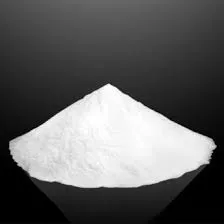
Nov . 14, 2024 19:55 Back to list
hpmc synthesis
HPMC Synthesis An Overview
Hydroxypropyl Methylcellulose (HPMC) is a non-ionic, water-soluble polymer derived from natural cellulose. It is widely used in various industries, particularly in pharmaceuticals, food, and construction, due to its unique properties such as thickening, binding, and film-forming capabilities. This article delves into the synthesis of HPMC, exploring the processes involved, its applications, and the significance of its characteristics.
The Synthesis Process
The synthesis of HPMC involves the chemical modification of natural cellulose. The process begins with the purification of cellulose, which is typically extracted from wood or cotton. The purified cellulose is then reacted with propylene oxide and methyl chloride in a regulated environment, facilitating the introduction of hydroxypropyl and methoxy groups onto the cellulose backbone.
This reaction occurs in several steps
1. Cellulose Preparation The raw cellulose is treated with a solvent to dissolve it partially, making it easier for subsequent reactions to take place. Common solvents include organic solvents or water at specific temperature conditions.
2. Etherification In the etherification step, the partially dissolved cellulose reacts with propylene oxide and methyl chloride. Under controlled temperature and pressure, these reagents attach to hydroxyl groups on the cellulose, resulting in the formation of hydroxypropyl and methyl groups. The ratio of these reagents determines the degree of substitution and thus the properties of the resulting HPMC.
3. Neutralization and Purification After the reaction, the product is neutralized to remove unreacted reagents and other by-products. This is typically achieved through washing with water or an alcohol solution. The final HPMC product is then dried and ground into a fine powder for easier handling and application.
4. Quality Control Throughout the synthesis process, quality control measures are implemented to ensure that the HPMC produced meets industry standards. Parameters such as viscosity, degree of substitution, and particle size are monitored to ascertain the properties of the final product.
hpmc synthesis

Applications of HPMC
HPMC's versatile properties make it suitable for a multitude of applications across various fields
- Pharmaceuticals In the pharmaceutical industry, HPMC is often utilized as a binder in tablet formulations, providing the necessary cohesion for active ingredients. Additionally, it serves as a thickening agent in liquid formulations and a stabilizer in suspensions.
- Food Industry HPMC is employed as a food additive, often listed as E464. It acts as a thickener, emulsifier, and stabilizer, enhancing the texture and shelf life of a wide range of food products such as sauces, dressings, and bakery items.
- Construction In the construction industry, HPMC is used in the production of mortars and concrete additives. Its water retention properties improve the workability of cement and plaster, allowing for better adhesion and improved functionality.
- Cosmetics HPMC is also found in cosmetic formulations where it acts as a thickener and emulsifier, contributing to the stability and texture of creams, lotions, and gels.
Conclusion
The synthesis of HPMC is a sophisticated process that transforms natural cellulose into a versatile polymer with extensive applications. Its ability to modify viscosity and enhance stability makes it invaluable across various industries. As research continues to expand on the functionalities and potential applications of HPMC, the importance of its synthesis process remains a fundamental aspect of its longevity in diverse market sectors. Understanding HPMC and its synthesis not only highlights its significance in current applications but also opens avenues for future innovations driven by this remarkable polymer.
-
Versatile Hpmc Uses in Different Industries
NewsJun.19,2025
-
Redispersible Powder's Role in Enhancing Durability of Construction Products
NewsJun.19,2025
-
Hydroxyethyl Cellulose Applications Driving Green Industrial Processes
NewsJun.19,2025
-
Exploring Different Redispersible Polymer Powder
NewsJun.19,2025
-
Choosing the Right Mortar Bonding Agent
NewsJun.19,2025
-
Applications and Significance of China Hpmc in Modern Industries
NewsJun.19,2025







